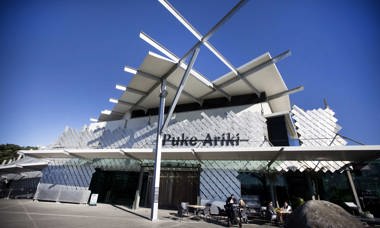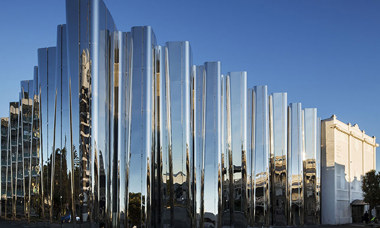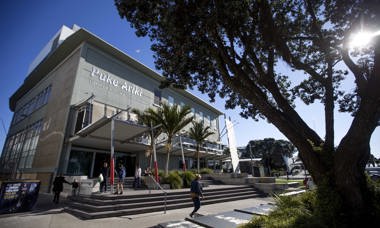General Information
Story Worlds – Festival Overview A Cultural Experiences collaboration celebrating storytelling in multiple ways
Ao Pūrākau – Tirohanga Whānui o te Taiopenga He mahi ngatahi mō ngā Wheako Ahurea e mānawatia ana ngā ara huhua o te paparanga pūrākau.

Story Worlds is a new festival that invites audiences to experience storytelling as a rich, interconnected practice—through the written words, material cultures, and oral traditions. Join a brilliant line up of thinkers, storytellers, authors and artists across four days as we explore how stories shape our understanding of the world, especially when viewed through the lenses of language, ecology, and participation.
Story Worlds is an invitation to see storytelling not only as something we tell or hear, but as something we live, carry, and co-create.
At the heart of Story Worlds are three guiding themes:
Language as Living
- Language is always shifting. It lives in what we say, write, and make.
- How do stories reflect the rhythm of language as it moves through time, place, and culture?
Participation as Creation
- Storytelling is not a solo act—it emerges between people.
- How do stories grow when many voices shape them, and what does it mean to make meaning together?
Ecology as Becoming
- We are inseparable from the natural world.
- How stories reveal our evolving relationships with the land, water, climate, and more-than-human life?
Story Worlds offers an open invitation: To listen deeply, speak honestly, and imagine boldly—together.
Join us for a festival that celebrates storytelling in all its forms and honours the ways stories help us make sense of ourselves, each other, and the world we share.
Ko Ao Pūrākau he taiopenga hou e whakahau ana i te minenga ki te whai wheako ki te horanga pūrākau hei tikanga haumako, kōtuitui hoki – mā ngā kupu kua tāngia, mā ngā rawa ahurea, me ngā kōrero tuku iho. Whakapiri mai ki tētehi tino hunga whai whakaaro nui, kōrero pūrākau, tuhi kōrero, mahi toi hoki hei ngā rangi e whā ka tūhuratia tēnei kaupapa ka pēhea te pūrākau e tārei i tō tātou mārama ki te ao, inarā, ka titiro mā te reo, mā te hauropi, mā te whai wāhitanga anō hoki.
He tono te Ao Pūrākau kia whakaaro ake ehara te pūrākau i te kai mā te waha noa iho, mā te taringa rānei, erangi he mea ka ngātahi tō tātou hāpai, kawe hoki, waihanga ngātahi hoki.
Kei te iho tonu o Ao Pūrākau ētehi kaupapa arataki e toru:
He reo, he oranga
- E panoni tonu ana te reo. Ka ora i roto i te kōrero, i te tuhi, i te mea hanga hoki.
- Ka pēhea ngā pūrākau ka whakaata i te mita o te reo i tōna koke mā te wā, te wāhi, me te ahurea?
Te Whai Wāhi hei Waihangatanga
- Ehara te kōrero pūrākau i te mahi taratahi—ka hua mai i waenga i ngā tāngata.
- Ka pēhea te pūrākau ka tupu ina waihangatia e ngā reo huhua, ā, he aha tēnei mea te hanga ngātahi i te māramatanga?
Te Hauropi hei Whanaketanga
- Tē taea te wetewete i a tātou i te ao māori.
- Ka pēhea ngā pūrākau ka hura i ō tātou tūhonotanga e tupu ana ki te whenua, te wai, te āhuarangi, otirā te oranga kei tua i te tangata?
Ko tā Ao Pūrākau he tono wherawhera: Kia ngātahi te āta whakarongo, te kōrero pono hoki, te pohewa pakari hoki.
Haere mai ki tō tātou taiopenga ka whakanuitia te kōrero pūrākau me ōna hanganga katoa, ā, ka whakaute ki ngā hua o te pūrākau e āwhina nei tātou ki te whai mārama ki a tātou anō, tētehi ki tētehi, tae ana ki te ao whānui e noho ngātahi nei tātou.


